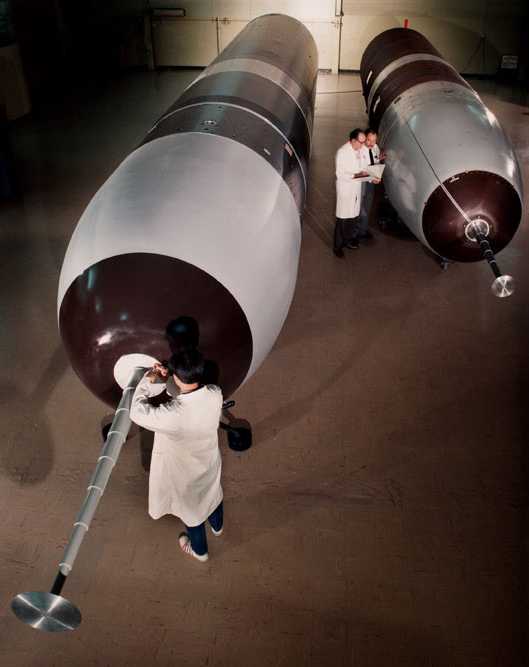

The Trident II missile is also provided to the United Kingdom. The United Kingdom uses locally produced warheads.
Trident II is more sophisticated than Trident I (C4) and has a significantly greater payload capability. All three stages of the Trident II are made of lighter, stronger, stiffer graphite epoxy, whose integrated structure means considerable weight savings. The missile's range is increased by the aerospike, a telescoping outward extension that reduces frontal drag by about 50 percent.
Trident II is launched by the pressure of expanding gas within the launch tube. When the missile attains sufficient distance from the submarine, the first stage motor ignites, the aerospike extends and the boost stage begins. Within about two minutes, after the third stage motor ignites, the missile is traveling in excess of 20,000 feet (6,100 meters) per second.
| Designation | Trident D5 |
|---|---|
| Ship Class Used On | USA: Ohio Class Submarines (24 missiles) UK: Vanguard Class Submarines |
| Date In Service | 1990 |
| Weight | 130,000 lbs. (58,967 kg) |
| Dimensions | 83 X 528 in (211 X 1,341 cm) |
| Payload | Seven 300 kt MARV |
| Range | 6,000 nm |
| Propulsion | 3 stage solid fuel rocket |
Data from:
- Lockheed-Martin Missile and Space
- "The Naval Institute Guide to World Naval Weapon Systems 1991/92" by Norman Friedman
- US Navy Fact File
